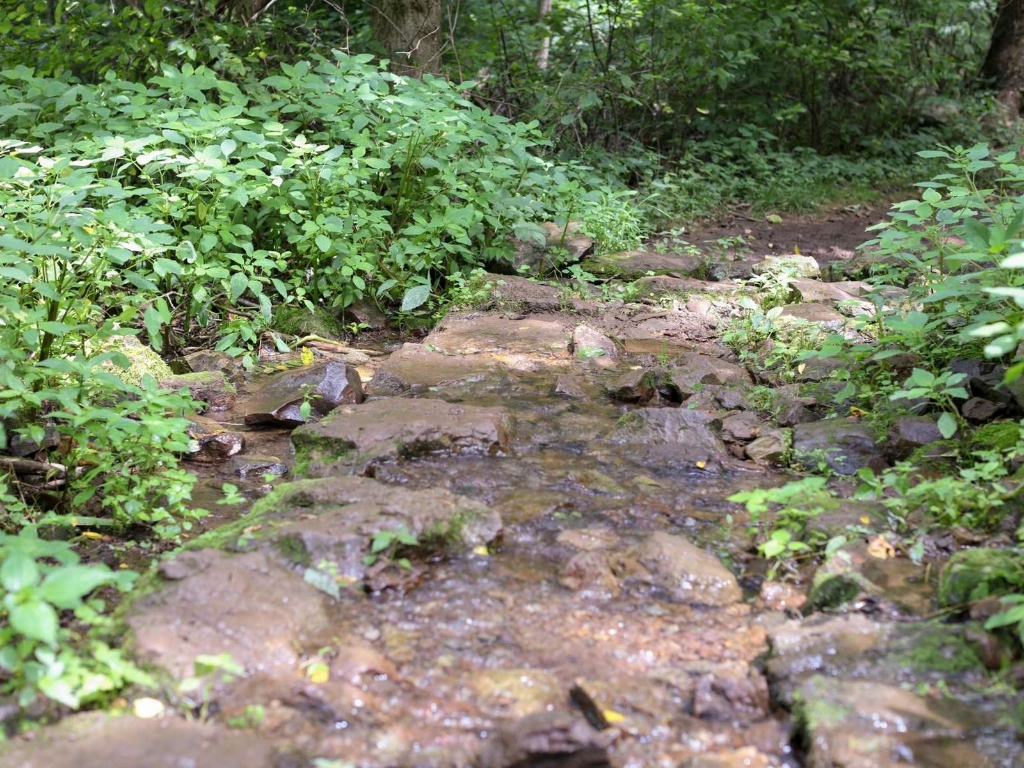
A stable water source would have been one of the most important factors in finding a place to live for Thomas and Martha Fox when they began farming here in the 1850s. This water not only provides for farming and human life, but also for a wide variety of plant and animal life as well. One of the reasons Shenandoah is so lush, and how much of the vegetation here seems to grow faster than other places, is the prevalence of water sources like this one here.
Where does this water come from?
The groundwater here is under your feet. As water filters from the earth's surface down to the groundwater table it is purified by the rocks and nutrients it passes through. Water travels through the pores within and between individual rocks and pebbles, sometimes being stored for years, before eventually emerging as a mountain spring or stream. The water here will join the Shenandoah River, and from there flow into Chesapeake Bay, then finally into the Atlantic Ocean.
The quality of water is directly related to air quality. Acidification is the primary threat to streams in Shenandoah. Acidification occurs when sulfur and nitric oxides produced from fossil fuel burning, especially from coal, react in the air to form acid compounds that then deposit onto the landscape. Think about all the ways this water could be used from the time it begins its journey on this mountain stream until it reaches the Atlantic Ocean.
Though this hollow is at times a quiet, enclosed space, what happens here can affect people and ecosystems far outside these hills. Likewise, these hills and this forest are constantly impacted by outside forces. As you travel forward, continue to look for signs of the Fox family's home, but keep in mind the rapid pace of change all around.
Is there something we missed for this itinerary?
Itineraries across USA


















































